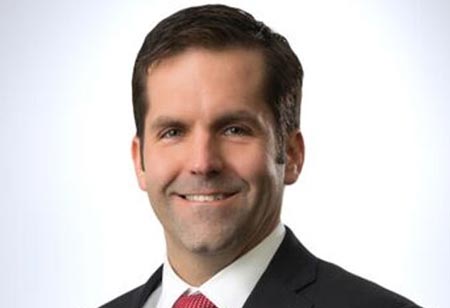THANK YOU FOR SUBSCRIBING

Achieving Reliable Software Development Processes Agile Pmo Spotlight: Gate Reviews
Timothy Murry, SVP, Technology Enterprise Applications, Omnicom Health Group

 Timothy Murry, SVP, Technology Enterprise Applications, Omnicom Health Group
Timothy Murry, SVP, Technology Enterprise Applications, Omnicom Health GroupIs your Project Management Office (PMO) struggling with fallout from application releases that are not ready? There are several steps that need to occur for software to be considered set for production release. One of the most impactful ways to review for readiness is called a Gate Review.
What Is A Gate Review?
Gate Reviews are a form of Change Control Board (CCB) reviews.
CCB meetings often focus on the scheduling aspect: when are we deploying? What else is being implemented concurrently? Are there any conflicts? Do we have the necessary supporting documents?
Gate Reviews go one level deeper. They focus on ensuring process compliance, helping project managers better evaluate if and how their team accomplished their defined Software Development Life Cycle (SDLC) goals.
Gate Review Process
• PM signs up to present at a regularly scheduled Gate Review session
• PM posts links to relevant artifacts for pre-review (see examples in Exhibit 2)
• PM presents their project and receives peer-review feedback • Gate Review facilitator documents the results
• PM follows-up on identified action items
When Should Gate Reviews Occur?
Gate Reviews may occur at any time during the SDLC. At a minimum, one should be implemented at the 95% work completion mark. Typically, that is the point just before a user Go / No-Go decision is about to be made.
"Gate Reviews go one level deeper. They focus on ensuring process compliance, helping project managers better evaluate if and how their team accomplished their defined Software Development Life Cycle (SDLC) goals"
Go / No-Go decisions are intended to elicit a sponsor’s view of functional readiness. Gate Reviews are a pre-requisite to ensure technical readiness. Exhibit 1: Sequence of Events
Preparing For A Gate Review
Gate Reviews should not create more work for the team. Set up a standard weekly time slot so that project managers just need to sign up and post links to existing project artifacts. There is no need to create a presentation just for the review. Instead, provide a simple checklist that shows what needs to be covered. This should align with your SDLC.
 Conducting A Gate Review
Conducting A Gate Review
Each Gate Review should include a facilitator, the project manager, and a quorum of peer review participants—the full project team does not need to be present.
The facilitator should be an administrator who runs the meeting. They should strive to inculcate a “show me” mindset by asking questions and verifying.
The goal of the Gate Review is not to validate that the project team made the right decisions (that is their call), but rather to ensure that the team was thorough and followed the SDLC process.
Recording The Results
Action Items and Blockers should be captured.
Action Items are follow-ups that need to be done at some point, which may be before or after the deployment. These are generally non-critical housekeeping items or open tasks. Examples might be Support Runbook updates or posting additional shared documents.
Blockers are open items that are critical and need to be completed before moving forward. Examples may be the completion of final testing or the preparation of user outage communications.
Posting of follow-ups in a collaboration tool, such as Microsoft Teams, is very beneficial. This way all team members can have access and the resolution of open items can be tracked as the work progresses.
Conclusion
Gate Reviews can significantly help teams prepare for production releases. Comprised of a meeting facilitator, presenter (the project manager), and a quorum of peer reviewers, Gate Reviews can occur at any point throughout the SDLC. At minimum, they should be held just before a user Go / No-Go decision is about to be made.
By documenting the review results, the facilitator can ensure that action items don’t fall through the cracks. Most importantly, the collaborative nature of the Gate Review encourages team members to learn from one another and creates a process of continuous improvement.
About The Author
Timothy Murry is a New York City-based project management leader with over three decades of experience creating highperforming teams across the healthcare, entertainment, finance, and management consulting sectors.
Tim is the former Senior Vice President for Technology Enterprise Applications at the Omnicom Health Group. Prior to joining Omnicom, Tim spent two decades at McKinsey & Company leading international IT programs and managing various application portfolios. Later, he served as Director of Project Management at the New York Stock Exchange (NYSE) and World Wrestling Entertainment, Inc. (WWE).
A certified Project Management Professional (PMP) and Scrum Master (CSM), Tim is passionate about software project management. He is a winner of the prestigious NYC Economic Development Corporation’s BigApps software competition and is currently working on his first book, Agile PMOs for the Real World, which is expected to come out later this year.
Read Also























ON THE DECK
AudioVisual Europe 2024